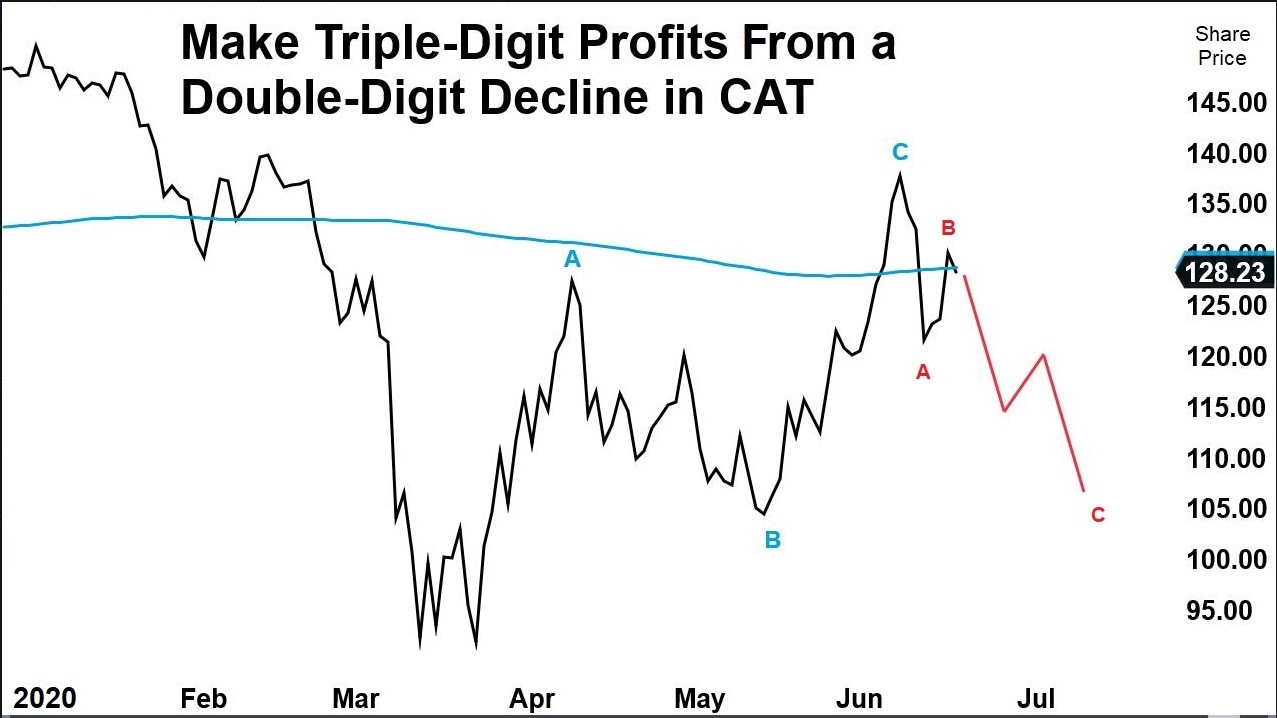Economic times are tough. There’s a light at the end of the tunnel now. But getting there may not be a straight line.
There are signs the U.S. economy is trying to rebound from lockdown.
The U.S. payrolls report in May surprised everyone when it showed that jobs were added to the market — even in a pandemic. This week, we learned that retail sales are bouncing back at their fastest rate ever. Both of those are good news for a reopening economy.
Plus, the stock market has roared back. The S&P 500 Index is up 40% from its lows.
Popular stocks in consumer discretionary, consumer staples and technology sectors are hitting new all-time highs.
But reality will set in.
For much of the economy and many stocks, recovery is not as easy as flipping the light switch back on.
Some sectors will have a tougher, longer journey to get back to normal.
The industrial sector is one of those. “Industrials” are the manufacturers of the technology, equipment and machinery that power the moving pieces of economic production.
Year to date, industrial stocks are down 13%. Only financial and energy stocks have performed worse.
As the recession seeps through the economy, industrial stocks’ woes will continue.
Industrials Are in Trouble From Here
Caterpillar Inc. (NYSE: CAT) is one stock you should consider selling if you own it or “selling short” if you want to play its coming decline for triple-digit profits.
Orders for Caterpillar’s equipment are down due to COVID-19 demand destruction.
Two of Caterpillar’s largest customers are struggling. The energy sector has been smashed by overproduction and low demand. And global mining production is pumping the brakes too.
Whispers about a U.S. infrastructure bill seemed to prop up the stock market at the start of this week.
A trillion dollars of infrastructure spending could be good for Caterpillar … but the likelihood of a bill getting through Congress before November’s election is low.
It’s time to sell CAT before investors figure out its troubles will linger throughout the year.
The black line is the share price of Caterpillar.
The blue line is the 200-day moving average (DMA), a measure of the stock’s longer-term trend. Right now, it is acting as a resistance level for the price of CAT. The stock’s price is having trouble getting above the 200DMA and staying there.
The blue A-B-C pattern denotes the stock’s recent rebound. You can see that it had a peak in April before falling to a low in May. It then shot up to a new recent high in June.
And the red A-B-C pattern shows my expectations for the stock’s decline.
I use these patterns to predict price trends. It’s the framework for my Apex Movement Patterns, or AMPs.
Prices are driven by basic emotions. AMPs help me identify when investors switch from fear to greed — and vice versa. These emotions cause price to move in three-wave patterns that are proportionate to its recent price history. We can see these patterns consistently throughout a stock’s history.
I expect a 15% decline to roughly $108 per share. This would constitute a logical retracement — or correction — of its March-to-June rebound.
Your Trade Setup
To benefit from the downside in Caterpillar, you can buy a put option. The value of the put will rise as the stock declines.
Based on my AMP system, I expect the stock to fall within two months. So we can use the August 21, 2020, expiration date to take advantage of it.
With the stock trading around $128 right now, we can buy the $130 strike price for roughly $11.
That gets us in a position to double our money as the stock price moves toward $108 a share over the next couple of months.
Since this is a bonus opportunity, we won’t be updating you on what action to take next. But we will tell you that a good rule of thumb is to set a limit order to sell half at whatever would net you a 50% gain.
For example, if you buy the put option for $11, you can set a limit order to sell half at $16.50.
But you’ll also want to watch your downside risk. Look to preserve capital if it falls below a 50% loss. That means you should exit the position if it falls by half.
Here’s a table with the trade setup.
Caterpillar will retrace its gains as optimism about the recovery fades. Buy puts to profit!
Reach out to us at winninginvestor@banyanhill.com with questions or feedback. We can’t respond to individual emails, but we do read them all.
Good investing,

Editor, Apex Profit Alert






